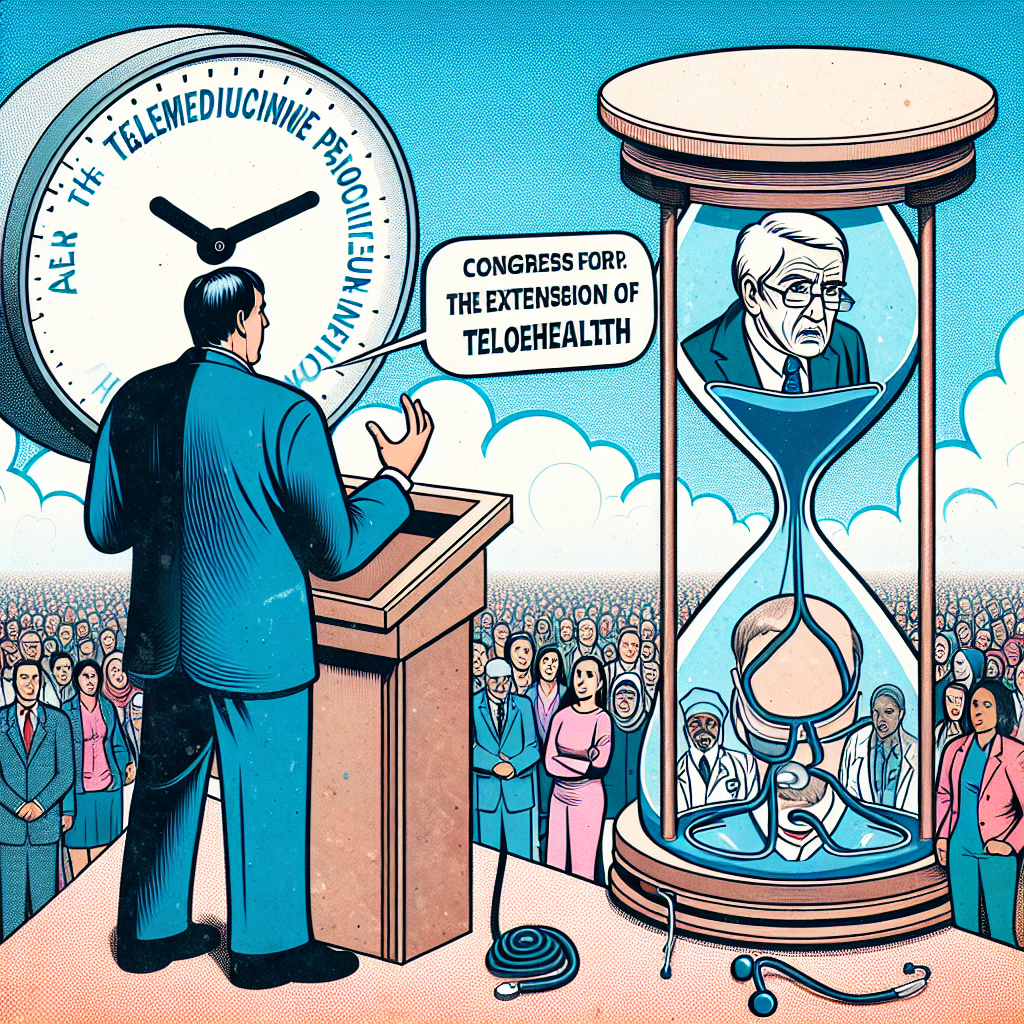ATA Urges Congress to Extend Telehealth Provisions Ahead of Deadline

The American Telemedicine Association (ATA) has been at the forefront of advocating for the expansion and integration of telehealth services across the United States. As the deadline for current telehealth provisions looms, the ATA is urging Congress to extend these critical measures. This article delves into the reasons behind this push, the potential impact on healthcare, and the broader implications for patients and providers alike.
The Current State of Telehealth Provisions
Telehealth has seen unprecedented growth, especially during the COVID-19 pandemic, as healthcare systems sought to minimize in-person interactions. The current telehealth provisions, which were expanded under emergency declarations, have allowed millions of Americans to access healthcare services remotely. However, these provisions are set to expire, raising concerns about the future of telehealth.
Under the current provisions, telehealth services have been reimbursed at parity with in-person visits, and restrictions on the types of services that can be delivered via telehealth have been relaxed. This has enabled a wide range of healthcare services, from mental health counseling to routine check-ups, to be conducted remotely.
Despite the success of these measures, the expiration of these provisions could lead to a significant reduction in telehealth services. This is particularly concerning for rural and underserved communities, where access to healthcare is already limited. The ATA argues that extending these provisions is crucial to maintaining access to care and ensuring that telehealth remains a viable option for patients and providers.
Impact on Healthcare Access
The expansion of telehealth has been a game-changer for healthcare access, particularly for individuals in rural or underserved areas. Telehealth has bridged the gap between patients and providers, offering a convenient and efficient way to receive care. However, the expiration of current provisions could reverse these gains.
For many patients, telehealth has become an essential part of their healthcare routine. It offers a level of convenience that traditional in-person visits cannot match, allowing patients to receive care from the comfort of their own homes. This is particularly beneficial for individuals with mobility issues or those who live far from healthcare facilities.
Moreover, telehealth has played a crucial role in addressing healthcare disparities. By removing barriers to access, telehealth has made it easier for individuals in underserved communities to receive care. This has been particularly important during the COVID-19 pandemic, as many individuals have been hesitant to visit healthcare facilities in person.
The ATA argues that extending telehealth provisions is essential to maintaining these gains in healthcare access. Without these provisions, many patients may find it difficult to access the care they need, leading to worse health outcomes and increased healthcare costs.
Economic Implications of Telehealth
The economic implications of telehealth are significant, both for patients and providers. For patients, telehealth can reduce the cost of healthcare by eliminating the need for travel and reducing the time spent in waiting rooms. This can be particularly beneficial for individuals with chronic conditions who require frequent visits to healthcare providers.
For providers, telehealth offers an opportunity to expand their reach and serve more patients. This can lead to increased revenue and improved patient satisfaction. However, the expiration of current telehealth provisions could threaten these economic benefits.
The ATA argues that extending telehealth provisions is essential to maintaining the economic viability of telehealth. Without these provisions, providers may be less likely to offer telehealth services, reducing access to care and potentially increasing healthcare costs.
Moreover, the economic impact of telehealth extends beyond the healthcare sector. By reducing the need for travel, telehealth can also have a positive impact on the environment, reducing carbon emissions and contributing to sustainability efforts.
Technological Advancements in Telehealth
Technological advancements have played a crucial role in the growth of telehealth. From video conferencing platforms to remote monitoring devices, technology has enabled healthcare providers to deliver high-quality care remotely. However, the expiration of current telehealth provisions could hinder further technological advancements.
The ATA argues that extending telehealth provisions is essential to fostering innovation in the telehealth sector. By providing a stable regulatory environment, Congress can encourage investment in new technologies and support the development of innovative solutions that improve patient care.
Moreover, technological advancements in telehealth have the potential to transform the healthcare landscape. From artificial intelligence to virtual reality, new technologies are being developed that could revolutionize the way healthcare is delivered. However, without the support of extended telehealth provisions, these advancements may be slow to reach the market.
Policy Considerations and Legislative Efforts
The push to extend telehealth provisions is not without its challenges. Policymakers must balance the need for expanded access to care with concerns about cost and quality. However, the ATA argues that the benefits of extending telehealth provisions far outweigh the potential drawbacks.
Several legislative efforts are underway to address the expiration of current telehealth provisions. These efforts aim to provide a framework for the continued expansion of telehealth services, ensuring that patients and providers can continue to benefit from this innovative approach to healthcare.
The ATA is actively working with lawmakers to advocate for the extension of telehealth provisions. By highlighting the benefits of telehealth and addressing concerns about cost and quality, the ATA hopes to secure the support of Congress and ensure that telehealth remains a viable option for patients and providers.
Conclusion
The ATA’s call for Congress to extend telehealth provisions is a critical step in ensuring the continued growth and success of telehealth services. By maintaining access to care, supporting economic growth, fostering technological innovation, and addressing policy considerations, extended telehealth provisions have the potential to transform the healthcare landscape.
As the deadline for current telehealth provisions approaches, it is essential for policymakers to recognize the importance of telehealth and take action to support its continued expansion. By doing so, they can ensure that patients and providers can continue to benefit from this innovative approach to healthcare, ultimately improving health outcomes and reducing healthcare costs.





